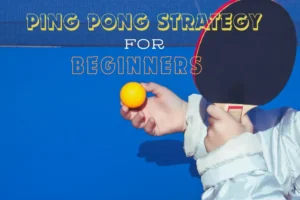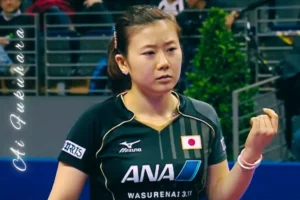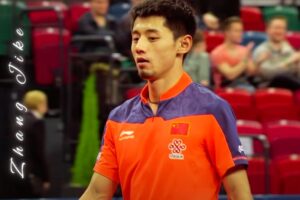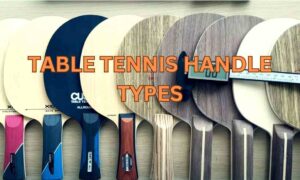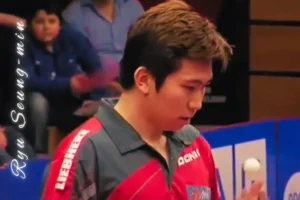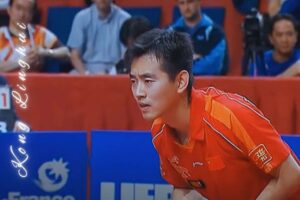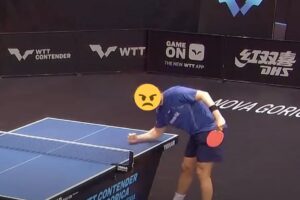In the world of table tennis, where precision meets agility and strategy is as crucial as skill, one name has stood out for nearly two decades—Ryu Seung-min. Born on August 5, 1982, in the bustling city of Seoul, South Korea, Ryu’s journey from a young boy with a dream to a celebrated Olympic gold medalist is nothing short of inspirational. His rise to the pinnacle of the sport is a tale of relentless hard work, indomitable spirit, and a unique playing style that has etched his name in the annals of table tennis history.
For fans and players alike, Ryu Seung-min represents the epitome of dedication and passion. His story is not just about winning medals; it’s about overcoming obstacles, staying true to one’s roots, and proving that with enough perseverance, anything is possible. Ryu’s achievements on the global stage have made him a national hero in South Korea and a respected figure worldwide. This comprehensive guide delves deep into the life and legacy of Ryu Seung-min, exploring his career, his unique playing style, and the impact he has had on the sport of table tennis.
Profile of Ryu Seung-min
Ryu Seung-min’s profile is a testament to his remarkable career and the dedication that drove him to achieve greatness. Here’s a detailed look at the key aspects of his life:
Personal Details
- Full Name: Ryu Seung-min.
- Date of Birth: August 5, 1982
- Place of Birth: Seoul, South Korea.
- Parents: Ryu Woo-hyeong, Hwang Gam-soon
- Spouse: Lee Yun-hee (m. 2011)
- Nationality: South Korean.
- Height: 175 cm (5 ft 9 in).
- Weight: 73 kg (161 lb)
- Playing Style: Penhold grip, characterized by aggressive forehand loops and quick footwork.
- Highest ranking: 2 (September 2004)
- Coaches: Trained under Yoo Nam-Kyu, a former Olympic gold medalist, and Kim Taek-Soo, another top South Korean player.
- Education: Graduated from Korea National Sports University.
Career Highlights and Achievements
Ryu Seung-min’s career is filled with moments of brilliance that have solidified his place as one of the greatest table tennis players of all time. His journey to success was paved with intense competition, particularly from Chinese players who have historically dominated the sport. Yet, Ryu’s unique playing style, rooted in the traditional penhold grip, allowed him to stand out and achieve extraordinary success.
One of the most significant highlights of Ryu’s career was his victory at the 2004 Athens Olympics. In a thrilling final against China’s Wang Hao, Ryu showcased his exceptional skills, winning the gold medal and breaking a nearly 16-year-long Chinese stranglehold on the Olympic men’s singles title. This victory was not just a personal achievement but a historic moment for South Korea, making Ryu the first non-Chinese player to win the Olympic gold in table tennis since the sport’s inclusion in the 1988 Seoul Olympics.
Beyond the Olympics, Ryu’s career includes numerous other accomplishments. He won the ITTF Pro Tour Grand Finals in 2001, demonstrating his ability to compete at the highest levels from an early age. In 2003, he earned a silver medal in the men’s singles at the Asian Table Tennis Championships, further establishing himself as a force to be reckoned with in the international arena. His success continued over the years, with several top finishes at the World Table Tennis Championships and Asian Games.
Ryu’s playing style, particularly his use of the penhold grip, became a hallmark of his career. At a time when the shakehand grip was becoming more popular, Ryu’s mastery of the penhold grip, combined with his lightning-fast footwork and powerful forehand loops, made him a unique and formidable competitor. His ability to adapt and thrive against the best players in the world, many of whom used the shakehand grip, is a testament to his skill, determination, and innovative approach to the game.
Learn More : Xu Xin’s Stunning Ping Pong Journey: A Player’s Tale
Ryu Seung-min’s Tournament Wins
Ryu Seung-min’s career is marked by an impressive array of victories in some of the most prestigious tournaments in the world of table tennis. Below is a detailed table highlighting his major wins and achievements over the years:
| Year | Tournament | Achievement |
|---|---|---|
| 2004 | Olympic Games (Athens, Greece) | Gold Medal |
| 2001 | ITTF Pro Tour Grand Finals | Champion |
| 2003 | Asian Table Tennis Championships | Team Gold, Singles Silver |
| 2005 | World Table Tennis Championships | Team Silver |
| 2007 | ITTF Pro Tour, Korea Open | Champion |
| 2010 | Asian Games | Team Silver |
| 2011 | Asian Games | Team Gold |
| 2012 | Olympic Games (London, UK) | Team Bronze |
This table showcases the breadth and depth of Ryu Seung-min’s accomplishments. His victories span over a decade, reflecting his consistency, resilience, and ability to compete at the highest levels of the sport. The 2004 Olympic gold remains the pinnacle of his career, a moment that not only defined his legacy but also inspired countless young athletes around the world. His success in the ITTF Pro Tour and various Asian competitions further underscores his versatility and dominance in both individual and team events.
Playing Style and Techniques
Ryu Seung-min’s playing style is a fascinating blend of tradition and innovation, rooted in the penhold grip that has become increasingly rare in modern table tennis. The penhold grip, where the racket is held like a pen, allows for exceptional control and power on forehand strokes but can be challenging for backhand play. However, Ryu’s mastery of this grip turned what could have been a disadvantage into a unique strength.
The cornerstone of Ryu’s game is his aggressive forehand loop, a shot that he executes with remarkable speed, spin, and precision. This technique involves generating a high amount of topspin while maintaining control over the direction and placement of the ball. Ryu’s forehand loop is not just a shot; it’s a weapon that has overwhelmed many of his opponents. His ability to generate such power and spin from the penhold grip is a testament to his technical skill and hours of dedicated practice.
Footwork is another critical aspect of Ryu’s playing style. The penhold grip requires excellent mobility, particularly in transitioning between forehand and backhand shots. Ryu’s footwork is characterized by quick, explosive movements that allow him to cover the table effectively and position himself optimally for his powerful forehand attacks. His agility and speed are often compared to those of a sprinter, enabling him to maintain control of the game’s pace and keep his opponents on the defensive.
Ryu’s defensive skills are also noteworthy. While his style is primarily aggressive, he possesses the ability to switch to a defensive strategy when needed. His reflexes and anticipation allow him to block and counter his opponents’ attacks, creating opportunities to regain control of the rally. This versatility in both offensive and defensive play has been a key factor in his success, allowing him to adapt to different opponents and match situations.
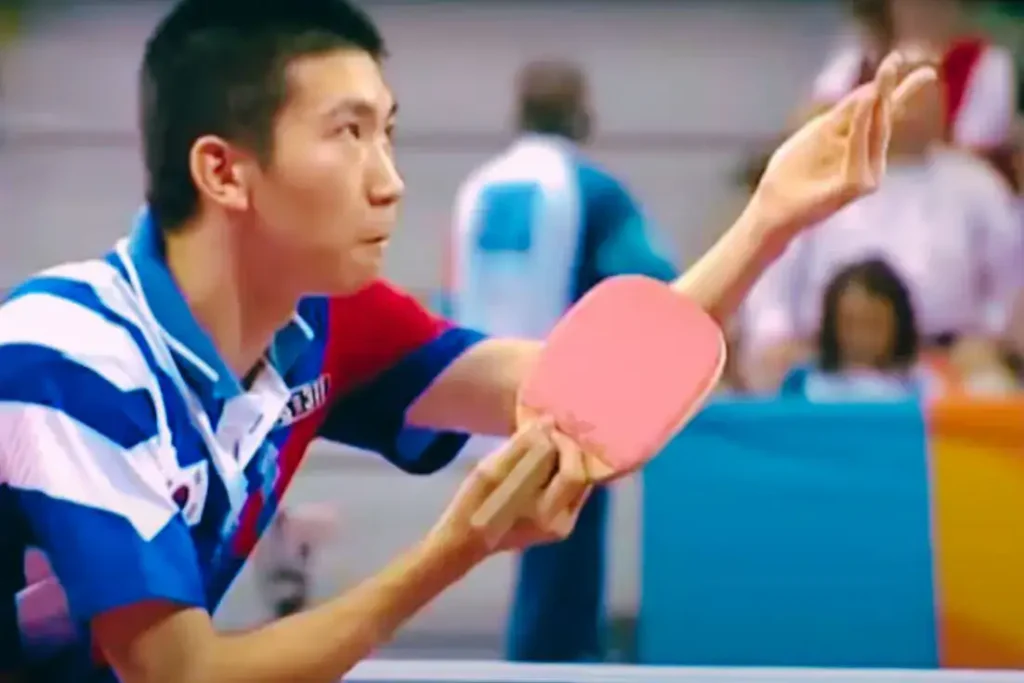
Historical Impact
The historical impact of Ryu Seung-min on the sport of table tennis cannot be overstated. His victory at the 2004 Athens Olympics was a watershed moment, not just for South Korea but for the global table tennis community. At a time when Chinese players were dominating the sport, Ryu’s triumph was a powerful statement that excellence in table tennis was not confined to one country. His victory broke a nearly two-decade-long streak of Chinese dominance in Olympic men’s singles, making him a symbol of hope and inspiration for players around the world.
Ryu’s success with the penhold grip also had a significant impact on the sport. During the late 1990s and early 2000s, the shakehand grip was becoming the preferred style among top players due to its versatility and balance between forehand and backhand play. However, Ryu’s mastery of the penhold grip demonstrated that traditional techniques could still be effective at the highest levels of competition. His success inspired a renewed interest in the penhold grip, particularly among young players who admired his unique style and sought to emulate his success.
Beyond his playing career, Ryu has made substantial contributions to the promotion and development of table tennis. As the President of the Korea Table Tennis Association, he has worked to improve the infrastructure and support systems for players in South Korea, ensuring that the next generation of athletes has the resources and opportunities they need to succeed. His involvement with the International Olympic Committee has also allowed him to advocate for the sport on a global stage, helping to secure its continued prominence in the Olympic Games.
Training Regimens
Ryu Seung-min’s training regimen was as rigorous as it was effective, designed to hone every aspect of his game from physical conditioning to mental preparation. His daily routine often began with early morning conditioning exercises, focusing on building stamina, agility, and core strength. These exercises included running, jumping drills, and weight training, all aimed at improving his speed, endurance, and explosiveness on the table.
Table tennis practice sessions were the heart of Ryu’s training regimen. He would spend several hours each day practicing his shots, with a particular emphasis on his forehand loop. This involved repetitive drills where he would hit hundreds of balls in rapid succession, focusing on maintaining consistency, accuracy, and spin. These drills were often accompanied by footwork exercises, where Ryu would practice moving around the table while executing his shots, simulating match conditions.
Ryu’s training also included extensive match play, where he would face off against teammates or sparring partners. These sessions allowed him to practice his strategies and adapt to different playing styles, sharpening his tactical awareness and decision-making skills. Match play was crucial in preparing Ryu for the mental and physical demands of high-level competition, helping him to stay sharp and focused under pressure.
Mental preparation was another key component of Ryu’s training regimen. He understood that table tennis was as much a mental game as it was a physical one. To strengthen his mental resilience, Ryu engaged in visualization techniques, where he would mentally rehearse matches, visualizing himself executing perfect shots and winning crucial points. This practice helped him build confidence and maintain a positive mindset, even in the face of adversity.
Ryu also placed a strong emphasis on recovery and rest, understanding that maintaining peak physical and mental condition required balance. He incorporated stretching, massage, and relaxation exercises into his routine to prevent injuries and reduce fatigue. Adequate sleep and nutrition were also vital, ensuring that his body had the necessary resources to recover from the intense demands of training and competition.
Personal Anecdotes and Stories
Ryu Seung-min’s career is filled with personal anecdotes that reveal the depth of his commitment to the sport and the challenges he faced along the way. One of the most compelling stories from Ryu’s early career is his decision to stick with the penhold grip, even as the shakehand grip was becoming more popular among top players. Ryu’s childhood coach, Yoo Nam-Kyu, a former Olympic gold medalist himself, believed that the penhold grip would allow Ryu to develop a unique playing style that could give him a competitive edge.
Despite the challenges associated with the penhold grip, particularly in backhand play, Ryu embraced the style and worked tirelessly to master it. His coach’s belief in him, coupled with Ryu’s determination to stand out in a sport dominated by shakehand players, motivated him to perfect his technique. This decision proved to be pivotal in Ryu’s career, as it allowed him to carve out a niche for himself and achieve success at the highest levels of competition.
Another memorable anecdote from Ryu’s career is his preparation for the 2004 Athens Olympics. In the months leading up to the Games, Ryu pushed himself to the limit, often practicing for eight to ten hours a day. His training was so intense that he would sometimes collapse from exhaustion at the end of the day. Despite the physical toll, Ryu remained focused on his goal, driven by the dream of winning an Olympic gold medal for his country.
Ryu’s hard work and perseverance paid off when he won the gold medal in Athens, defeating China’s Wang Hao in a thrilling final. The victory was a culmination of years of sacrifice and dedication, and it remains one of the most emotional moments of his career. After the match, Ryu was overwhelmed with emotion, tears streaming down his face as he realized that he had achieved his lifelong dream.
Interviews and Quotes
Ryu Seung-min has given numerous interviews throughout his career, offering insights into his mindset, training, and approach to the game. One of the most powerful quotes from Ryu came after his victory at the 2004 Athens Olympics. Reflecting on the significance of his achievement, Ryu said;
“Winning the gold medal was a dream come true, but it was also a testament to the hard work and sacrifices I made along the way. I hope my journey can inspire others to pursue their dreams with the same passion and dedication.”
This quote encapsulates the essence of Ryu’s career—a journey defined by relentless effort, unwavering determination, and a deep love for the sport. It also highlights Ryu’s humility and his desire to use his success as a source of inspiration for others, particularly young athletes who look up to him as a role model.
In another interview, Ryu spoke about the importance of mental toughness in table tennis, a sport where matches can be decided by the narrowest of margins. “The physical aspect of the game is important, but mental strength is what separates the good players from the great ones. You need to be able to stay focused and composed, even when the pressure is at its highest.”
Ryu’s emphasis on mental strength is a recurring theme in his interviews, and it’s clear that this aspect of the game played a crucial role in his success. Whether facing a match point against a top-ranked opponent or competing in the final of the Olympic Games, Ryu’s ability to stay calm and focused under pressure was one of his greatest assets.
Comparative Analyses
When comparing Ryu Seung-min to other table tennis legends, it’s clear that his career is defined by a unique blend of tradition and innovation. Unlike many of his contemporaries who adopted the shakehand grip, Ryu’s decision to stick with the penhold grip set him apart in a sport where versatility and adaptability are key. This decision, while unconventional, proved to be a masterstroke, allowing Ryu to carve out a niche for himself and compete at the highest levels.
Ryu’s playing style can be contrasted with that of Ma Long and Zhang Jike, two of the greatest Chinese table tennis players who dominated the sport with their shakehand grips. Ma Long, known for his powerful backhand and tactical brilliance, and Zhang Jike, celebrated for his explosive athleticism and mental toughness, represent the modern era of table tennis. Their success with the shakehand grip reflects the versatility and balance that this style offers, particularly in transitioning between forehand and backhand play.
In contrast, Ryu’s penhold grip, while less versatile, offered unique advantages in terms of control, spin, and power on forehand strokes. His ability to generate exceptional speed and spin from the penhold grip made him a formidable opponent, particularly in offensive play. This comparison highlights the diversity of techniques in table tennis and underscores Ryu’s ability to compete against, and often surpass, players who used the more popular shakehand grip.
Ryu’s success with the penhold grip also draws comparisons to earlier generations of players, such as Liu Guoliang and Wang Hao, who also excelled with this style. However, Ryu’s ability to maintain his competitive edge in an era dominated by shakehand players is a testament to his skill, innovation, and adaptability.
Evolution of the Game
Ryu Seung-min’s career spanned a period of significant change in the world of table tennis, both in terms of playing styles and technological advancements. When Ryu first emerged on the international scene, the sport was transforming, with new equipment, rules, and strategies reshaping the way the game was played.
One of the most notable changes during Ryu’s career was the introduction of the 40mm ball in 2000, which replaced the 38mm ball that had been used previously. The larger ball was designed to slow down the game and increase the duration of rallies, making the sport more spectator-friendly. This change had a significant impact on playing styles, as players had to adjust their techniques to account for the reduced speed and increased spin potential of the larger ball.
Ryu’s adaptability to these changes was a key factor in his continued success. His ability to generate high levels of spin and power with the penhold grip allowed him to thrive in this new environment, where control and precision became even more important. His success with the larger ball also demonstrated the effectiveness of the penhold grip in an era when the shakehand grip was becoming increasingly dominant.
In addition to changes in equipment, Ryu’s career also saw advancements in racket technology, with the development of new rubbers and blade materials that offered enhanced spin and control. These technological advancements allowed players to push the boundaries of what was possible in terms of speed, spin, and placement, leading to a more dynamic and fast-paced game.
Ryu’s ability to stay competitive in this evolving landscape is a testament to his skill and adaptability. His success with the penhold grip, despite the increasing popularity of the shakehand grip and the changing dynamics of the sport, highlights his innovative approach and his willingness to embrace new challenges.
Fun Facts and Trivia
Ryu Seung-min’s career is filled with interesting and lesser-known facts that add to his legacy as one of the greatest table tennis players of all time. Here are some fun facts and trivia about Ryu:
- Olympic Flag Bearer: Ryu Seung-min had the honor of being the flag bearer for South Korea during the opening ceremony of the 2012 London Olympics. This prestigious role is a testament to his status as a national hero and his contributions to the sport of table tennis.
- Victories Over Chinese Legends: Ryu is one of the few players in the history of table tennis to have defeated both Wang Liqin and Ma Lin, two of the greatest Chinese table tennis players, in the same tournament. This remarkable achievement underscores Ryu’s ability to compete with the very best in the world.
- Multilingual Abilities: Ryu is fluent in both Korean and English, a skill that has served him well in his role as an international ambassador for table tennis. His ability to communicate effectively in multiple languages has helped him build strong relationships with players, coaches, and officials from around the world.
- Calm and Composed Demeanor: Despite his intense training regimen and competitive spirit, Ryu is known for his calm and composed demeanor off the table. He often engages in meditation and relaxation exercises to maintain his mental well-being, a practice that has contributed to his longevity in the sport.
Beyond His Career
Beyond his illustrious career as a player, Ryu Seung-min has made significant contributions to the governance and promotion of table tennis. In his role as the President of the Korea Table Tennis Association, Ryu has worked tirelessly to improve the infrastructure and support systems for players in South Korea. His efforts have focused on developing youth programs, enhancing coaching and training facilities, and securing funding for athletes, all aimed at ensuring the continued success of South Korean table tennis on the global stage.
Ryu’s influence extends beyond his home country, as he has also played a key role in the global table tennis community. As a member of the International Olympic Committee, Ryu has been a strong advocate for the sport, working to ensure its continued inclusion in the Olympic Games and promoting its growth worldwide. His leadership and vision have helped shape the future of table tennis, ensuring that it remains a vibrant and competitive sport for generations to come.

FAQs
Q. Who is Ryu Seung-min?
Ans: Ryu Seung-min is a South Korean table tennis player known for his exceptional skills with the penhold grip. He won the gold medal in men’s singles at the 2004 Athens Olympics and is recognized as one of the greatest players in the sport’s history.
Q. What are Ryu Seung-min’s most notable achievements?
Ans: Ryu Seung-min’s most notable achievement is winning the gold medal in men’s singles at the 2004 Athens Olympics. He has also won multiple international tournaments and served as the President of the Korea Table Tennis Association.
Q. How did Ryu Seung-min’s playing style differ from other top players?
Ans: Ryu Seung-min is known for his penhold grip, a less common playing style that emphasizes powerful forehand loops and control. This grip set him apart from many of his contemporaries who used the shakehand grip.
Q. What is unique about Ryu Seung-min’s playing grip?
Ans: Ryu Seung-min’s penhold grip is unique because it is less commonly used in modern table tennis. This grip allows for greater control and spin on forehand strokes but can be more challenging for backhand play, making Ryu’s success with this grip particularly impressive.
Conclusion
Ryu Seung-min’s legacy in the world of table tennis is one of excellence, innovation, and inspiration. His journey from a young boy with a dream to an Olympic gold medalist and respected leader in the sport is a testament to his dedication, hard work, and passion for the game. Ryu’s unique playing style, characterized by the penhold grip and powerful forehand loops, set him apart in a sport where versatility and adaptability are key.
His historic victory at the 2004 Athens Olympics remains one of the most significant moments in the history of table tennis, breaking the Chinese dominance and inspiring a new generation of players. Beyond his achievements as a player, Ryu’s contributions to the development and promotion of table tennis, both in South Korea and globally, have solidified his place as one of the sport’s greatest ambassadors.
As we reflect on Ryu Seung-min’s career, it’s clear that his impact on the sport of table tennis goes far beyond his impressive list of titles and accolades. He has inspired countless players around the world, proving that with determination, innovation, and a love for the game, anything is possible.

